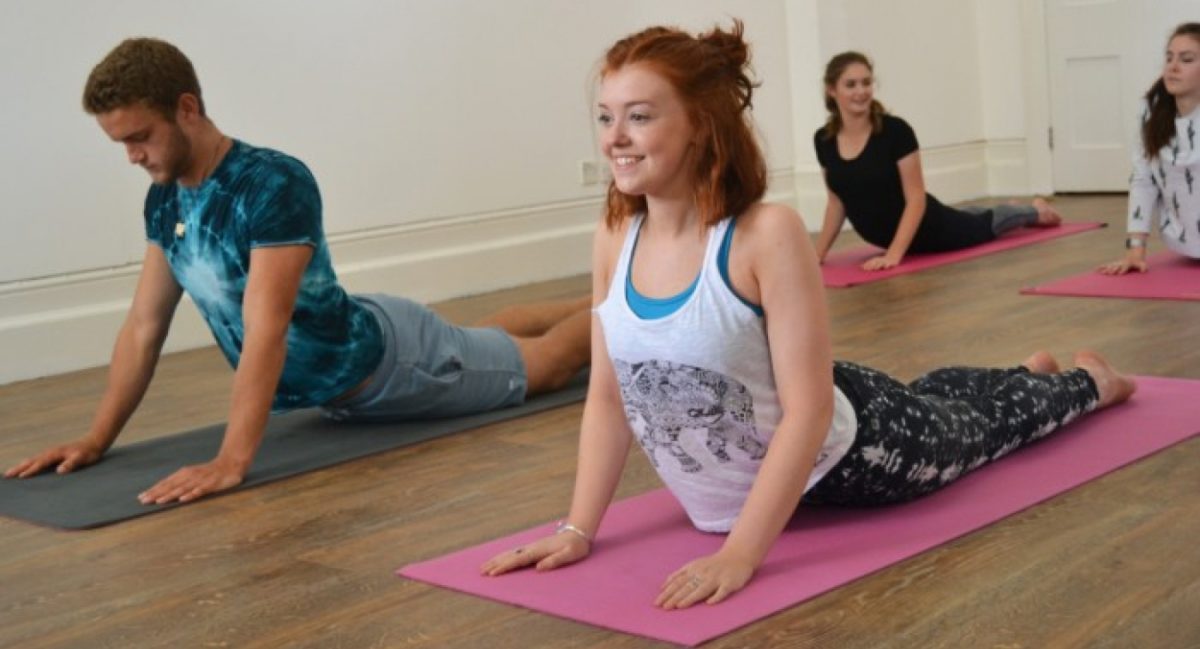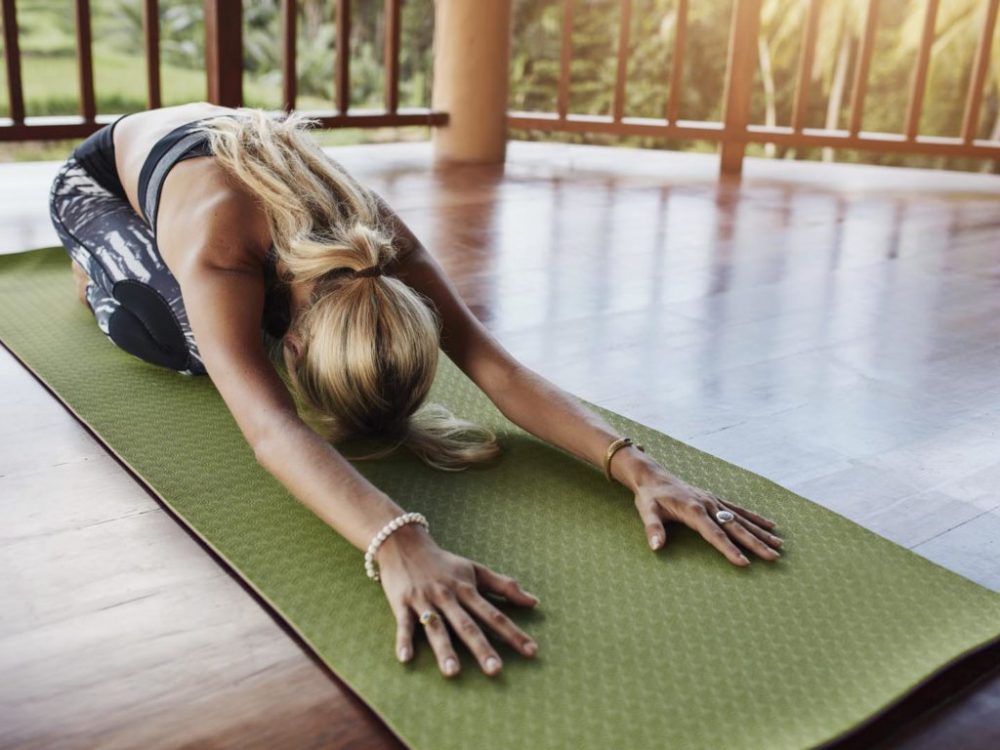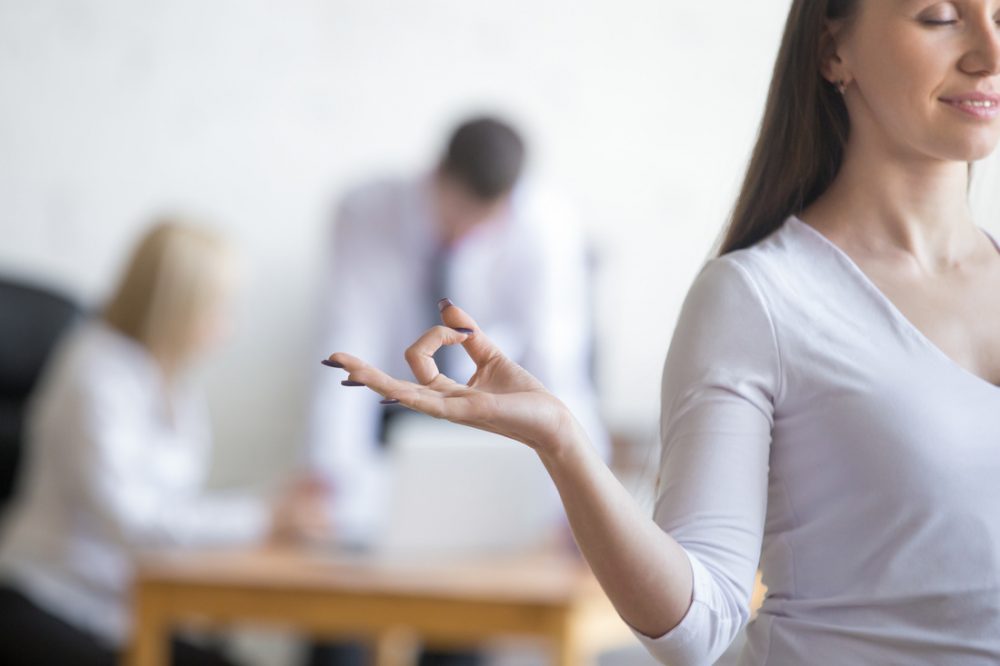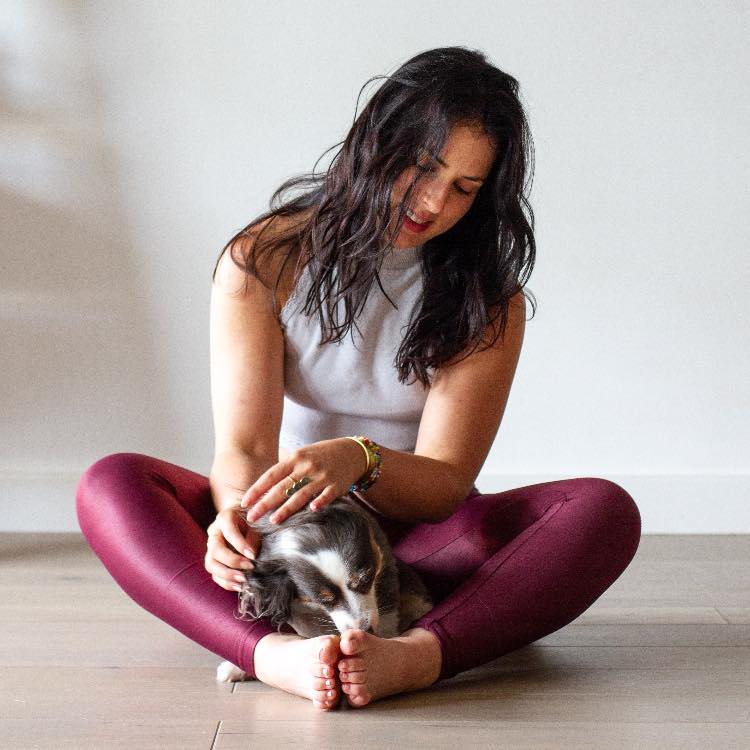By Jordan Ashley, Founder of Souljourn Yoga Foundation
Growing up in Santa Monica, California in the 2000s, there was an abundance of yoga and wellness. Next to every Starbucks and Coffee Bean, there was sure to be a yoga studio. Women like my mother – clad in Hard Tail flared yoga pants, mat in one hand and iced coffee in the other – were constantly in my periphery. And with that view came feelings of insecurity and self-doubt. I did not look like those women. I was small, pudgy, and full of palpable self-hatred. While I wanted to embody the confident bare midriffs and impressive inversions (my mom had been a gymnast in another life), I also wanted to reject it and create my own space, a space where I could just be.

For many women all over the world, this is still what yoga is all about: white, privileged, and elitist. There is a certain caliber of cissgender, caucasian, and thin that unfortunately still dominates the wellness space. And I’m on a mission to change that, to decentralize yoga and make it adaptable and accessible to all, especially to teenage girls, who in my humble opinion need it more than ever.
Live in the Moment
In a world where we are inundated with camera phones and a compulsive need to capture every moment, many of us have stopped truly living in the moment. This means our actions, lifestyles, and movements are constantly being manipulated and edited for strangers to see, like, and comment on. That kind of pressure to constantly perform (even on a subconscious level) is something we need to shift away from. And yoga can help us do that.
It doesn’t matter if you’re a typical American teenager in Santa Monica or a young teen in Cambodia or Rwanda (both countries that I work in), you most likely have a phone and are active on a social media platform. It’s universal to have an outsider’s gaze on us at all times, to judge or applaud (fingers crossed) our faces, bodies, and general existence.
When we come to the yoga mat and leave our phones at the door, we are giving ourselves permission to explore the idea of embodiment, where our internal and external world become one. It’s a meeting of movement aligned with breath as a way to keep the mind focused on something other than the never-ending stream of thoughts, anxieties, and observations. For teenage girls especially, it’s important to have the framework to just be.
I used to go to yoga with my mom when I was around 10 year years old. By wanting to emulate not only her but all of the women in the room, it became a toxic place for my sense of self. In theory, it was mother/daughter time, something that had been established post-divorce. But in practice, it never felt that way.
I wasn’t as flexible or strong as my mom. Granted this is the perception of a child, but it still played immensely into my ever-precocious sense of self. However, as a young teen, I started to go to yoga by myself. At first, it was just a way to get out of P.E (thanks to liberal Santa Monica middle school which signed me off to do ‘Independent Study’). P.E for me, like for many teenage girls, was a miserable experience. For one thing, I was asthmatic. I also had no interest in team sports or group projects (I’ve always, for better or worse, marched to the beat of my own drum). So I finagled my way out of the Skechers running across the gym floor and into bare feet on a yoga mat.
When I was in my own practice, alone and not trying to be like anyone else, that’s when yoga truly started to resonate with me.
By the time I was 14, I had dropped a lot of weight. I had an undiagnosed eating disorder and only weighed 83 pounds. I was the last of my friends to get my period. The practice of yoga – seeing how my body can move and become different shapes all while on the safety of my mat, my own little island – became a safe haven for me. Little did I know I was at the beginning of a lifelong journey.
This practice took me all the way through high school to a college across the country in New York City. During this time, I healed from my disordered eating habits, and through my regular yoga practice, I discovered a spiritual side of myself that I never knew was there. I did my first 200-hour teacher training the summer after I graduated college.
Yoga is all about repetition, hence why it’s called a “practice.”
There is no end goal. It’s about how you show up every time and cultivate compassion around the present moment. When we are guided to repeat the same shapes, poses, and ritual of mindful movement, things begin to shift from the mat into our daily lives. The physical practice of yoga, or asana, encourages us to challenge our physical limitations or find our edge and breathe through the discomfort, awkwardness, and even fear, such as a fear of backbends.

Things that are especially important for teenage girls.
It helps them not only have autonomy and control over their own space, bodies, and movement, but it also allows them to just be free through guided shapes to explore their own personal edges and limitations. To me, that is the definition of empowerment.
In 2016, I founded a charity called Souljourn Yoga Foundation, a US 501(c)3 charity that raises funds and awareness for young women’s education around the world by using yoga as an inclusive vehicle for change. We work on four continents and have raised over $45,000 for our incredible partner organizations that support and educate young women who have big dreams and goals to academically triumph and become the next generation of female leaders.
Many of these teenage girls have academically rigorous schedules and an immense pressure to succeed as it not only impacts their own future but also their families. And with so much stress and pressure resting on their shoulders, it’s so important to give them the space and opportunity to just move and breathe for themselves without being concerned about exams, family obligations, or anything else that might be contributing to their stress.
Teenager: Carrying the Weight of the World
I remember in 2018 when teaching a group of teenage girls in Cambodia, when they came into the child’s pose and I started giving them an adjustment (of course, asking permission beforehand), I couldn’t believe how tight their backs and shoulders were. They are literally carrying the weight of the world, and while they probably come from a different upbringing and way of life than your daughter, niece, or cousin, the plight of the teenage girl is still universal.
This is why I think yoga can help. I’m not saying it’s a magic elixir or cure-all, but it does make a difference. When we teach teenage girls how to practice yoga and teach it themselves, they become their own leaders. They don’t have to look outward for guidance. They are given a space to design, lead, and guide their very open yoga class.

Before you roll out the yoga mat, it’s important to acknowledge that the ability to practice yoga and meditation is a luxury and a privilege. To have the time, space, and opportunity to engage in any self-care is a form of privilege. Even though yoga and medication are free when self-practice and require very little, if any, equipment, not everyone has the luxury of even 15 minutes in a given week that are not dedicated to ensuring safety, shelter, or sustenance.
The central premise of my research is that the value of yoga practice can be autonomously engaged when it is taught in a collaborative way. It is not offered as a “one-size-fits-all” remedy, and there is always a careful process of listening and adaptation. While I believe the idea of guided movement with breath and mind connection is beneficial when used as a way for young women to (re)connect with their bodies, the practice must ponder the question of how it is beneficial from the young women’s point of view.
My Ph.D. research works with a group of Amazigh (the Tamazight word for ‘free people,’ instead of Berber, which translates to Barbarian from early Roman occupation) teenage girls in the High Atlas Mountains in Morocco, how they reflect on their experience of yoga training, and how the training becomes a site at which the embodied experience of movement is reflected upon.
The On the Ground Project explores the notion that learning yoga and other holistic practices, including elements of self-care such as meditation and creative expression through movement, can positively impact and even empower these female students, giving them a space for freedom of expression.
And in the end, I hope that I become obsolete, that this skill set, this embodiment practice of yoga can be adapted, used, changed, and altered to suit these young women and their communities because, at the end of the day, it’s not about me. It’s about these teenage girls discovering all of the possibilities and power that lives in each one of them – be it on the mat or elsewhere, the choice is and should be up to them.
About the author:

Jordan Ashley is a yoga teacher and abuse survivor. Since 2016, Souljourn Yoga Foundation, a US 501(c)3 nonprofit, has been supporting young women’s education around the world by using yoga as an inclusive vehicle for change.
Inspired by seva, the Sanskrit word and yogic principle of selfless service, and ‘sojourn’ which captures the essence of being in a place for a time, Souljourn Yoga collaborates with local community-based projects and international nonprofits and endeavors to support sustainable educational pathways for women across the world with the belief that all women deserve equal access to education and their own space to breathe, connect, and grow. You can watch Jordan’s Tedx Talk here where she describes her inspiration for creating the organization.
Disclaimer
The Content is not intended to be a substitute for professional medical advice, diagnosis, or treatment. Always seek the advice of your physician or other qualified health provider with any questions you may have regarding a medical condition.